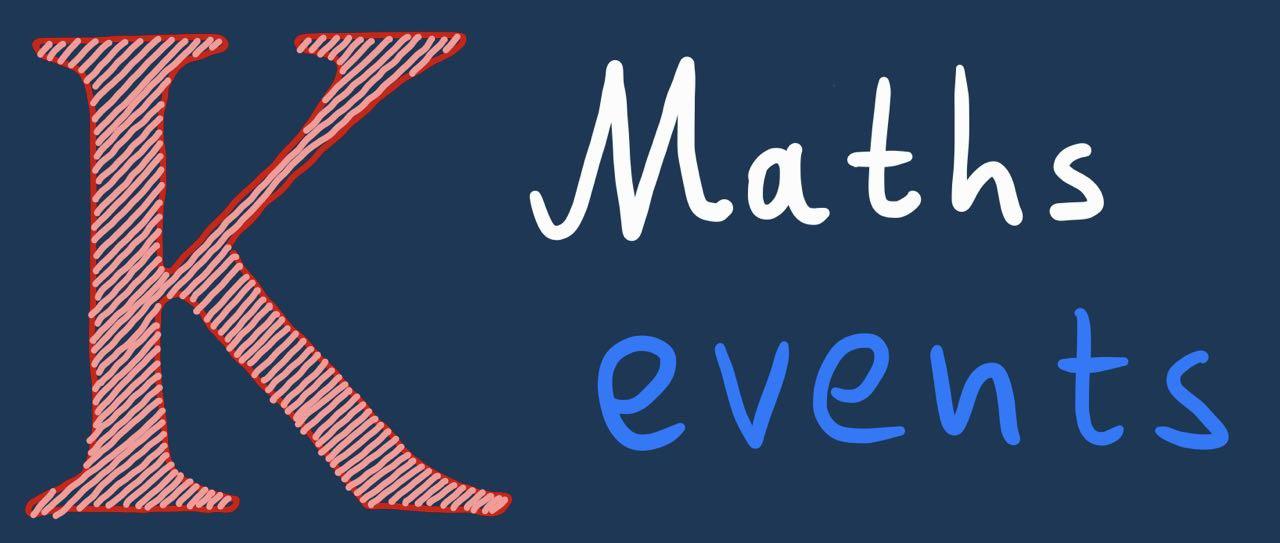Week 08.12.2024 – 14.12.2024
Monday (09 Dec)
DS Random matrices, Young diagrams and plane trees
regular seminar Fabio Deelan Cunden (Bari)
| at: 12:30 - 13:30 KCL, Strand room: K6.63 abstract: | We consider ‘λ-shaped random matrices’, whose entries are i.i.d. in the boxes of a given Young diagram λ and zero elsewhere. In particular, we study their limiting spectral distribution when the shape λ is dilated by a growing factor N. The moments of such a distribution are a generalisation of Catalan numbers, and enumerate combinatorial objects which we call λ-plane trees: these are trees whose vertices are labelled in a way that is ‘compatible’ with λ. Based on joint works with Elia Bisi and Marilena Ligabò. Keywords: |
PR KCL Probability Seminar: Weak subordination of multivariate Lévy processes
regular seminar Boris Buchmann (Australian National University)
| at: 14:00 - 15:00 KCL, Strand room: S3.32 abstract: | Subordination is the operation that evaluates a Lévy process at a subordinator, giving rise to a path-wise construction of a "time-changed'' process. In probability semigroups, subordination was applied to create the variance gamma process, which is prominently used in financial modelling.
|
ME A case study of mind maps in mathematics
regular seminar Wodu Majin (University of Sheffield)
| at: 15:00 - 16:00 KCL, Strand room: S2.30 abstract: | In this presentation I will discuss how I have used mind maps in my teaching. In particular, I will describe an assignment in which students were asked to produce mind maps in a module that heavily featured numerical methods. I will explain my reasons for developing this kind of assignment and what skills I wanted students to develop. I will also reflect on the implementation of the assignment, and on student engagement with it. I will use this as a springboard to briefly discuss challenges and possibilities of helping students develop a richer understanding of mathematics. Keywords: |
Tuesday (10 Dec)
NT Lattice Points in Thin Sectors
regular seminar Ezra Waxman (University of Haifa)
| at: 15:00 - 16:00 KCL, Strand room: K3.11 abstract: | On the circle of radius R centred at the origin, consider a ``thin'' sector about the fixed line y = \alpha x with edges given by the lines y = (\alpha \pm \epsilon) x, where \epsilon = \epsilon_R \rightarrow 0 as R \to \infty. We discuss an asymptotic count for S_{\alpha}(\epsilon,R), the number of integer lattice points lying in such a sector, and moreover present results concerning the variance of such lattice points across sectors. Keywords: |
ST Math Data Science: Information Geometry
regular seminar Alice Le Brigant (Universite Paris 1)
| at: 15:00 - 17:00 KCL, Strand room: Safra Lecture Theatre abstract: | Geometric learning on probability distributions with the Fisher-Rao metric
|
Wednesday (11 Dec)
DS Spatial segregation from first principles
regular seminar Vincenzo Nicosia (Queen Mary)
| at: 13:30 - 14:30 KCL, Strand room: S5.20 abstract: | The assessment and quantification of spatial correlations in complex
|
Thursday (12 Dec)
ST Using optimal design theory in cytotoxicity experiments -- Bridging the gap between statistics and toxicology
regular seminar Kirsten Schorning (Technische Universität Dortmund )
| at: 14:00 - 15:00 KCL, Strand room: Strand 4.29 abstract: | Concentration-dependent cytotoxicity experiments are frequently used in toxicology. Although it has been reported that an adequate choice of concentrations, i.e., the design, substantially improves the quality of the statistical inference, a recent literature review of three major toxicological journals has shown that the corresponding methods are rarely used in toxicological practice.
|
Friday (13 Dec)
TP Joint Maths-Physics Event
Conference Multiple Speakers (KCL)
| at: 15:00 - 15:01 KCL Strand room: K6.29 abstract: | 15:00 - Jeremy Mann: "Semiclassical N-body Problem in AdS at Large Spin" //
|
